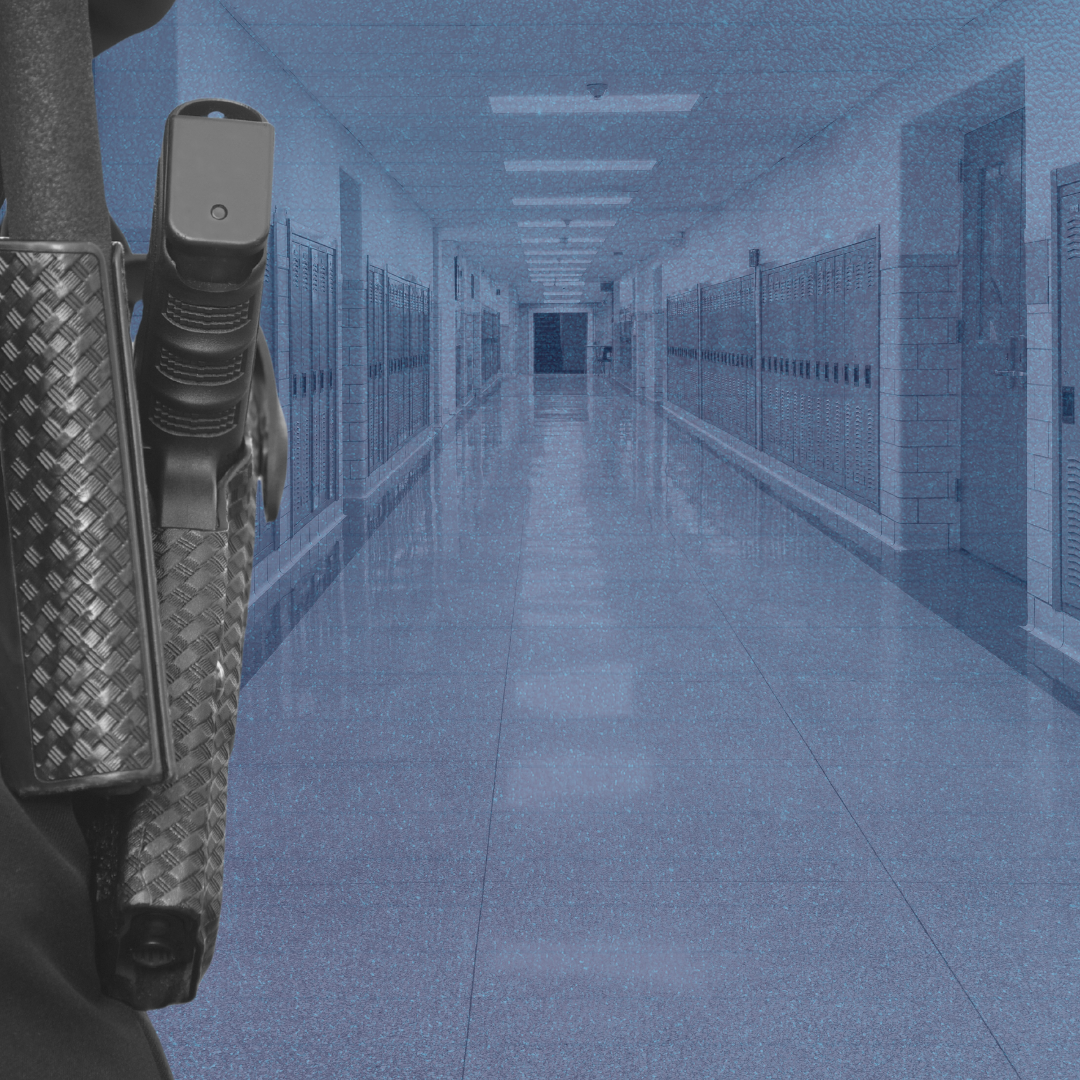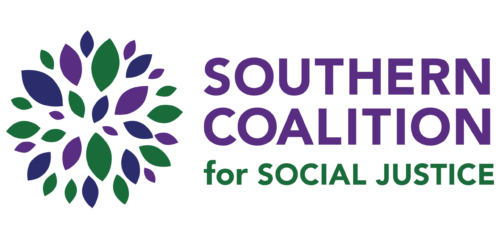REFRAMING PUBLIC SAFETY
School Safety Doesn't Include Police
The Problem
Millions of students go to schools with a constant police presence but an insufficient number of counselors, nurses, psychologists, or social workers. While the increase in the number of law enforcement officers in schools over the last 25 years has not resulted in safer schools, it has led to more arrests and referrals to the criminal legal system for kids. The focus on policing over supportive programming has also worsened existing inequities for students of color and those with disabilities, resulting in unacceptable racial disparities when it comes to school suspensions, juvenile court referrals, and college readiness metrics. This is all despite the well-established fact that increasing student access to interconnected resources, like school counselors and mental health professionals, increases educational achievement for students and improves overall safety.
The Solutions
- Schools should not have SROs. School districts and local governments should remove police from schools and shift that funding to professionals trained to support students. As noted, the daily presence of law enforcement officers does not make schools safer. Moreover, the financial investment in SROs is staggering. Between 1999 and 2019, federal and state governments spent $2 billion funding SROs. North Carolina increased funding for SROs by over 170% in 2018, and spent over $100 million on SROs between 2016 and 2022. The increased presence of police in schools also fuels the policies and practices that result in sending more students to the criminal legal system.
- The authority and role of SROs in schools should be clearly defined and limited. The scope of any SRO program should be clearly delineated in a Memorandum of Understanding (MOU) between the school district and law enforcement agency. Administrators and teachers should enforce school disciplinary policies, not SROs. Among other things, any MOU should require that SROs be barred from enforcing school rules; prohibited from arresting students for misdemeanors on school grounds; prohibited from using restraints on youth in schools; prohibited from arresting youth for any incident that did not occur at school; and required to be trained on crisis intervention, avoiding the use of force, and youth mental health, among other topics.
- Transparency and accountability. Local governments should collect and publish data on all SRO interactions in school. There should also be a complaint process that is easy to navigate for students and families, and geared toward holding officers accountable for misconduct. Because there are 115 separate school districts across North Carolina, and multiple schools within each district, understanding how to even submit a complaint, much less track school, district, and statewide trends about incidents involving SROs can be challenging. Southern Coalition for Social Justice created a first-of-its-kind tool aimed to empower students, parents, and school employees to navigate local policies regarding filing school grievances in connection with SROs.
Resources
Police in Schools: How to File a Complaint
The School Resource Officer (SRO) Complaint Tool helps parents, students, and employees file complaints against SROs in their school district.
Racial Equity Report Cards
Racial Equity Report Cards use public data to provide a snapshot of school districts' and the state's school-to-prison pipelines, including any racial disproportionalities that exist.
National Campaign for Police Free Schools
The National Campaign for Police Free Schools is a formation of youth-led grassroots organizations fighting to end the criminalization of youth in the classroom and implement an affirmative vision of safety and transformative justice.
The More You Know
The presence of police in public schools has dramatically increased since the 1990s.
This growth has taken place despite research showing that the presence of SROs does not produce safer school environments, results in disproportionate policing of students of color and students with disabilities, and worsens the school-to-prison pipeline.
Police presence on a campus criminalizes child and adolescent behavior.
Police presence on a campus criminalizes child and adolescent behavior. It turns something like disrupting class into a criminal charge, leading to arrest, prosecution, and time behind bars. And even when the criminal legal system isn’t invoked, the presence of school police still results in more punitive school-based punishments, like seclusion, suspension, and expulsion.
Students of color and students with disabilities suffer the most from an ongoing police presence in school.
Students of color and students with disabilities suffer the most from an ongoing police presence in school. These students are disproportionately referred to and arrested by law enforcement while in school.
Armed officers within schools make schools less safe.
Research shows that armed officers within schools make schools less safe. On average, shootings at schools with an armed guard ended with three times as many people killed. As the Journal of the American Medical Association emphasizes, “[w]henever firearms are present, there is room for error, and even highly trained officers get split-second decisions wrong.”
What Reimagining School Safety Involves
- Build a trusting school environment where students are willing to come forward when they hear something concerning as a means of reducing school shootings.
- Demilitarize SRO personnel by removing weapons from school police officers, ending districts’ participation in the Federal 1033 Program, removing metal detectors and surveillance technology, and disarming school staff.
- Deprioritize investments in law enforcement-centered and pro-carceral measures to deal with student conduct.
- Encourage and require routine, robust, and regular training for school officials, counselors, and SRO officers on violence prevention, restorative justice practices, holistic approaches to student conduct, classroom management, and school safety.
- Investigate alternatives to uniformed police personnel within school districts such as community advocates, safety support, mental health counselors, and crisis response teams.
- Create more diversion programs, alternative schools, and other programs to help at-risk youths.

Proof of Concept: Police-Free Schools
An increasing number of communities have removed police from schools and invested in alternatives that have been proven to be effective. For example:
Chicago, IL School District: The Chicago Board of Education voted in February 2024 to remove all remaining SROs in Chicago Public Schools by the start of the 2024-2025 school year. The new policy replaces SROs in Chicago’s high schools with holistic conflict resolution alternatives such as restorative justice and crisis prevention personnel.
Oakland, CA School District: In 2020, the Oakland Unified School District elected to remove all SROs from Oakland public schools. In addition to removing officers, the resolution diverts funds to expanding counseling, violence prevention, and other mental health support services. Early data tracking has suggested a positive shift; 134 police calls to campus were made between April 2021 and April 2022; in that same timeframe, in 2019-2020, nearly 1,900 calls were made.
Rochester, NY School District: In June 2020, the Rochester School District voted to remove all SROs from their public schools for the 2020-2021 school year. The district’s decision was accompanied by a 4% cut to the Rochester police budget, saving the community approximately $1.2 million. SROs were replaced with school sentries, unarmed individuals that provide security and support services. City officials have remained committed to restorative practices and have not considered reinstating armed SROs except during pick-ups and drop-offs.
Minneapolis, MN School District: In 2020, the Minneapolis School Board voted to terminate its contract with the Minneapolis Police Department (MPD) in response to the death of George Floyd. Under the new school safety arrangement, the School District has hired “public safety support specialists” to replace SROs. Many of the new public safety specialists are former students or former staff at the local schools in Minneapolis and – more importantly – are unarmed. Early preliminary data suggests that fewer students are disciplined than in previous years.
Madison, WI School District: In 2020, the Madison School Board decided to cease its partnership with the Madison Police Department. Previously, MPD had stationed four SROs in the district's four mainstream high schools. Since the decision to remove SROs, police calls have declined; the decline is primarily due to the implementation of an Office of Safety to handle situations internally before contacting outside law enforcement.
